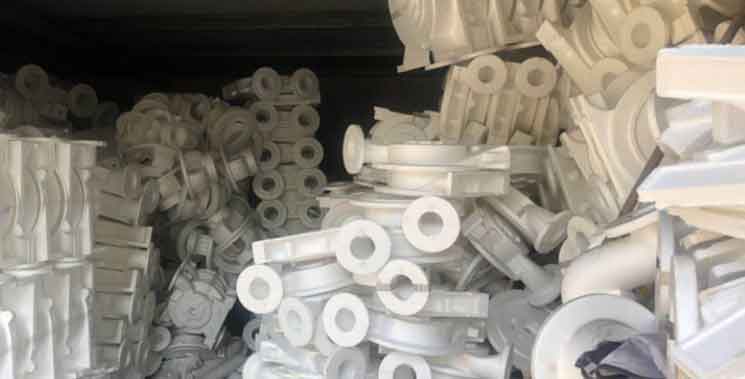Lost foam casting has found several applications in the aerospace industry, where the demand for lightweight and high-performance components is critical for achieving fuel efficiency, reducing emissions, and enhancing overall aircraft performance. The process’s ability to produce intricate and near-net-shape parts, along with its cost-effectiveness, makes it particularly attractive for aerospace manufacturers. Here are some specific applications of lost foam casting in aerospace:

- Engine Components: Lost foam casting is used to manufacture various engine components, such as intake manifolds, cylinder heads, and complex exhaust systems. The lightweight nature of lost foam castings contributes to improving overall engine efficiency and performance.
- Aircraft Structure Parts: Lost foam casting is employed to create structural components, such as wing ribs, fuselage frames, and bulkheads. These components need to be both strong and lightweight to ensure the aircraft’s structural integrity while minimizing weight.
- Ducting Systems: Lost foam casting is used to produce intricate ducting systems, including air intake ducts, ventilation ducts, and cooling systems. The ability to create complex shapes in a single casting reduces the need for additional assembly steps and joints, contributing to weight reduction and improved efficiency.
- Landing Gear Components: Lost foam casting is used to manufacture landing gear components, such as brackets, fittings, and support structures. The process allows for the integration of various features and mounting points, enhancing the landing gear’s overall performance.
- Interior Components: Lost foam casting is utilized to produce interior components like seat frames, armrests, and tray tables. The lightweight characteristics of lost foam castings contribute to fuel efficiency and overall aircraft weight reduction.
- Control Surfaces: Lost foam casting is employed to create control surfaces like ailerons, elevators, and rudders. These components require precise and intricate shapes to ensure aerodynamic efficiency, and lost foam casting facilitates the production of such complex geometries.
- Avionics Enclosures: Lost foam casting can be used to manufacture avionics enclosures and housings for electronic components. The process allows for the integration of cooling channels and other features directly into the casting.
- Propellers and Rotors: Lost foam casting is used to produce propellers and rotors for aircraft and drones. The lightweight nature of lost foam castings contributes to better aerodynamic performance and energy efficiency.
The aerospace industry’s continuous pursuit of lightweight and high-performance components, coupled with the flexibility and cost-effectiveness of lost foam casting, makes it an attractive manufacturing process for various aerospace applications. As technology and materials continue to advance, lost foam casting is likely to play an even more significant role in the aerospace industry’s future by enabling the creation of innovative and advanced components.
